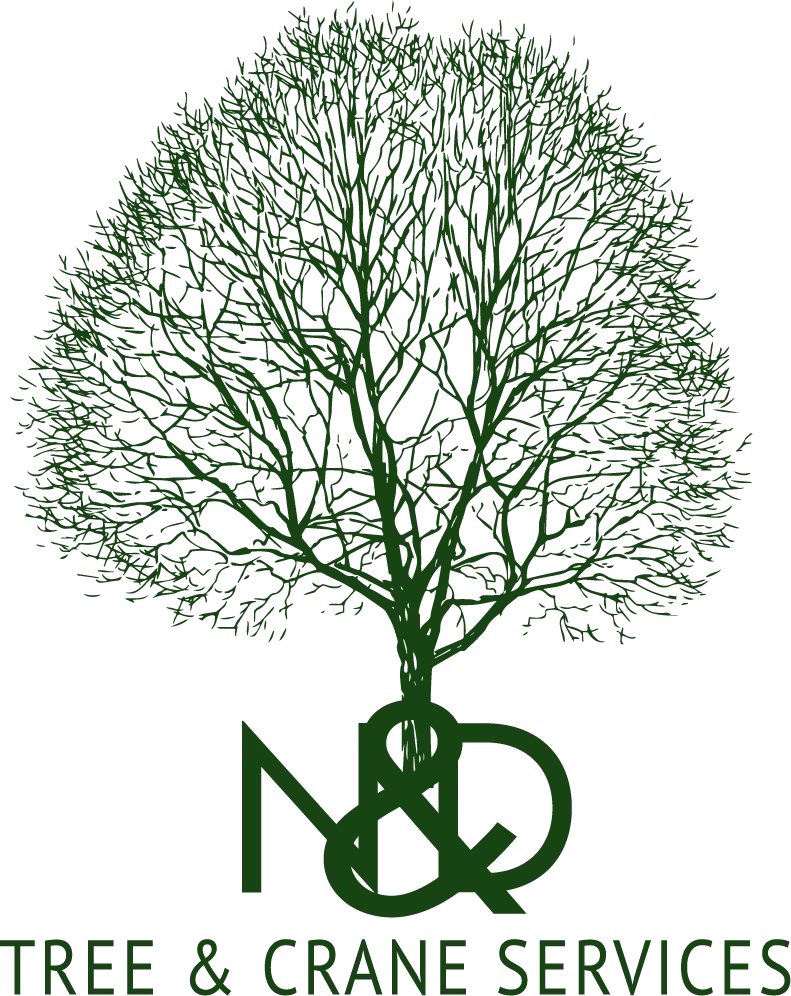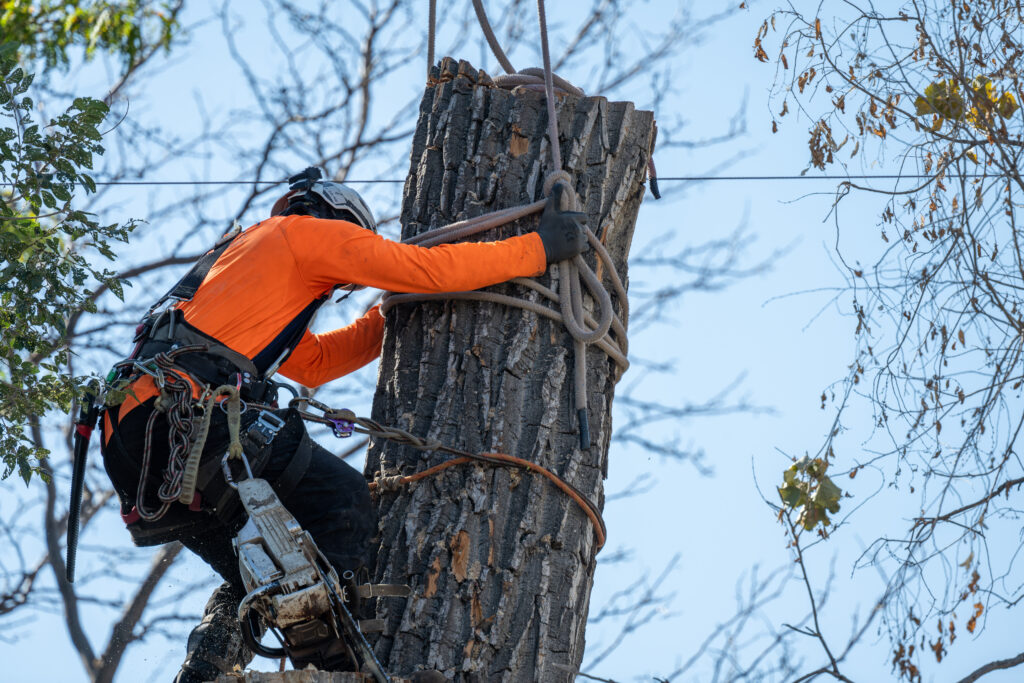The Arborist’s Guide to Proper Pruning: More Than Just Trimming
Anyone with a saw can cut a branch off a tree. This simple fact is why so many valuable trees in the Parker area are damaged by well-intentioned but improper “trimming.” At N&D Tree & Crane Services, we don’t just trim trees; we prune them. The difference is critical. Trimming is often an indiscriminate act of cutting things back. Pruning, when performed by an ISA Certified Arborist, is a deliberate, scientific process designed to improve a tree’s health, safety, and structure for the long term.
Understanding the science and objectives behind a proper pruning cut is the first step for any homeowner who wants to protect the significant investment their trees represent. This guide explains our professional approach to pruning and why the right cut can mean the difference between a tree that thrives and one that merely survives.
Why We Prune: The Goals of an Arborist
While a well-pruned tree is certainly beautiful, aesthetics are often a secondary benefit. Our primary goals are always centered on the tree’s health and the safety of your property. Every cut we make is for a specific reason that falls into one of four categories.
Safety: The most critical objective is to remove hazards. An arborist is trained to identify and mitigate risks posed by dead, dying, or structurally weak limbs—often called “widowmakers”—before they can fail and cause catastrophic damage to your home or family.
Health: Proper pruning is a key component of Plant Health Care. We selectively remove diseased or pest-infested wood to stop the problem from spreading. We also thin the canopy to improve air circulation and light penetration, which helps reduce the likelihood of fungal diseases that thrive in stagnant, damp conditions common after Colorado’s spring rains.
Structure: This is especially important for young and developing trees. We perform structural pruning to correct defects, such as weak V-shaped branch unions or competing main stems (codominant stems), which are prone to splitting as the tree matures. This early intervention trains the tree to develop a strong, single trunk and a stable branch structure that will last a lifetime.
Clearance: Trees in a residential landscape must coexist with their surroundings. We prune to provide necessary and safe clearance from buildings, roofs, walkways, and utility lines, preventing damage and maintaining access.
The Science of the Cut: Professional Pruning Techniques
Every pruning cut creates a wound. A tree cannot “heal” a wound in the way humans do; instead, it must seal it off through a process called compartmentalization. A proper cut, made in the right location, allows the tree to seal the wound efficiently, protecting itself from decay and pests. An improper cut can leave a permanent entry point for problems.
Crown Cleaning & Thinning
The most common and beneficial types of pruning are cleaning and thinning. Crown cleaning is the fundamental first step: the removal of the “four D’s”—dead, dying, diseased, or detached branches. This immediately improves a tree’s safety and appearance. Crown thinning is a more advanced technique involving the selective removal of live branches to reduce density. This is not about removing large amounts of foliage, but rather strategically opening up the canopy to improve its structure and reduce the “sail effect” in high winds.
Crown Reduction & Raising
Sometimes, a tree’s overall size needs to be managed. Crown raising removes lower branches to provide clearance for people, vehicles, or sightlines. This must be done carefully to ensure the tree retains enough of its lower canopy to sustain itself. Crown reduction is a meticulous process used to decrease the overall height or spread of a tree. This is achieved by pruning main branches back to a strong lateral branch that is at least one-third the diameter of the cut being made. This allows the lateral branch to take over as the new leader, maintaining the tree’s structural integrity. This technique is the only proper way to reduce a tree’s size.
The Absolute Don’t: Why Tree Topping is So Destructive
There is no practice more harmful to a tree than topping. Topping is the indiscriminate cutting of branches to stubs, and it is never an acceptable pruning method. While some homeowners may request it to drastically reduce a tree’s size, a professional and ethical arborist will refuse.
Here is exactly why topping is so damaging:
N&D Tree: Pruning with Purpose and Precision
Proper pruning is a long-term investment in the health, safety, and value of your property. It requires a deep understanding of tree biology, structure, and the specific challenges posed by our Colorado environment. Our team, which includes an ISA Board Certified Master Arborist and a TCIA Certified Treecare Safety Professional, has the expertise to make the right cuts on the right branches at the right time. We ensure that every pruning action we take serves a specific purpose, contributing directly to the vitality and longevity of your valuable trees.
Don’t leave your trees to chance. Contact N&D Tree & Crane Services for a professional consultation and discover how expert pruning can protect your landscape for years to come.


